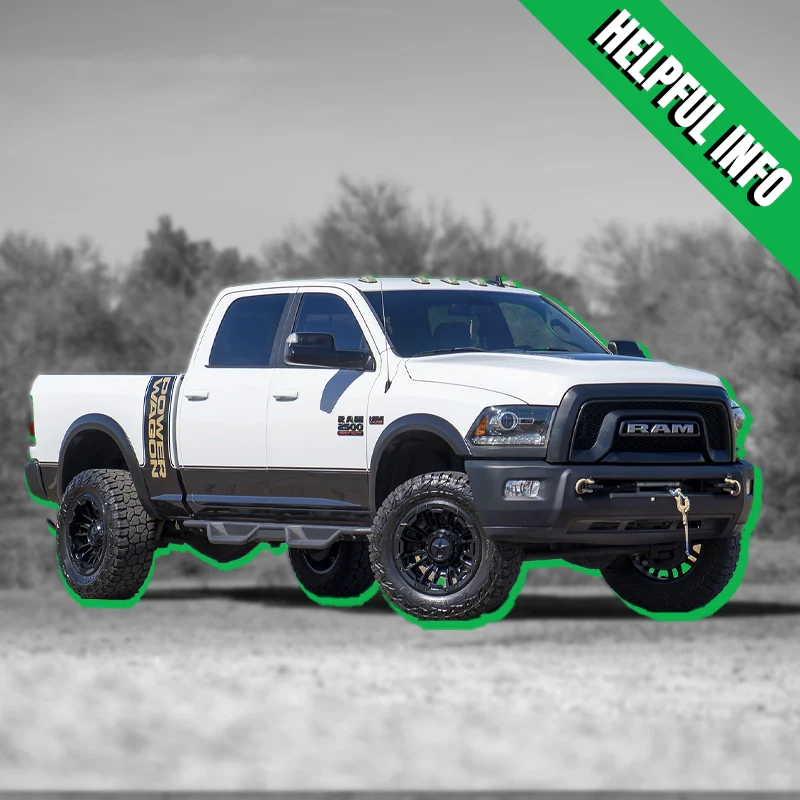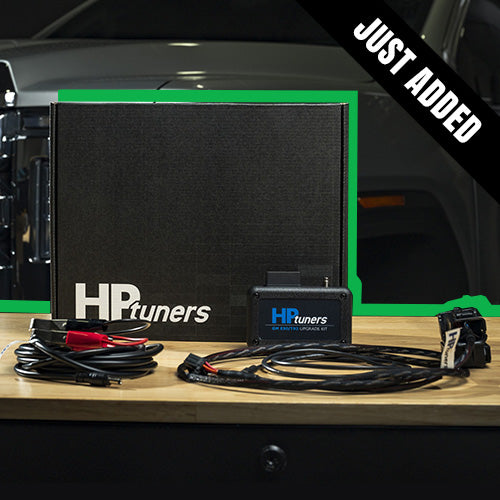

RAM 2500 & 3500 Wheel Offset Guide (2003–Present)
1. Introduction: Why Wheel Offset Matters for Off-Roading

Whether you're rock crawling in Moab or hauling gear through muddy backcountry trails, the wheel offset on your Ram 2500 or 3500 plays a critical role in off-road capability and long-term reliability.
These heavy-duty trucks are engineered for strength and durability, but as soon as you step into the world of lift kits, 35s, 37s, or beadlock wheels, your wheel offset becomes a central factor in how your truck handles. Too much offset in the wrong direction and you could face premature wear on ball joints, poor steering geometry, or tires that rub every time you flex the suspension.
This guide walks through what wheel offset really means, how it affects performance on and off-road, and what works best for your Ram HD based on your build goals.
2. Understanding Wheel Offset: Positive vs. Negative vs. Zero

Offset is the distance between the centerline of the wheel and the mounting surface that bolts to the hub, measured in millimeters. There are three basic types:
- Positive Offset (+): The mounting hub is closer to the outer edge of the wheel. This pulls the wheel inward, often used on stock wheels for stability and compliance with width regulations.
- Zero Offset (0): The mounting surface is centered between the inner and outer lip. It offers a neutral stance and balanced weight distribution.
- Negative Offset (–): The mounting hub sits behind the wheel’s centerline, pushing the wheel outward. This increases track width and gives an aggressive look but requires more fender clearance.
Why Offset Matters:
- Suspension Geometry: A high positive offset can cause rubbing on upper control arms or sway bars. A more negative offset helps clear suspension and steering components—especially when using wider tires.
- Stance & Stability: Negative offset wheels create a wide, planted stance. This improves trail stability but can lead to mud spray, increased stress on hubs, and legality issues in some states.
- Steering Feel & Scrub Radius: Deviating too far from OEM offset affects scrub radius and how your truck handles on technical trails or at low speeds.
- Component Wear: Wheels with deep negative offset can increase stress on wheel bearings, steering knuckles, and tie rods—especially if running larger tires or towing regularly.
For most off-road builds, zero to moderately negative offset wheels provide the best balance between clearance, stance, and component longevity.
3. Backspacing vs. Offset: What’s the Difference?

Many truck owners use the terms offset and backspacing interchangeably, but they refer to two different measurements. Understanding both is critical for dialing in wheel fitment—especially when you're adding wider tires or changing your suspension setup.
| Term | Measures... | Units | Affects... |
|---|---|---|---|
| Offset | Distance between wheel centerline and hub mount | mm | Stance & steering geometry |
| Backspacing | Distance from hub mount to back of wheel | inches | Inner clearance (suspension, brakes) |
How to Calculate Backspacing:
Backspacing = (Wheel Width ÷ 2) + (Offset ÷ 25.4)
Example:
9" wide wheel with +18 mm offset
So: (9 ÷ 2) + (18 ÷ 25.4) = 4.5 + 0.71 = ~5.21" backspacing
Backspacing Comparison Table:
| Wheel Width | Offset (mm) | Approx. Backspacing | Stance Description |
|---|---|---|---|
| 9" | +18 mm | 5.2" | Flush / Slightly tucked |
| 9" | 0 mm | 4.5" | Mild poke |
| 9" | –12 mm | 4.0" | Aggressive poke |
| 10" | –18 mm | 3.6" | Wide stance, deep offset |
Why It Matters for Ram HD Builds:
Ram 2500 and 3500s, especially post-2010 models, have large brake calipers, radius arms, and tight suspension geometry. Backspacing must be considered along with offset, or you risk:
- Inner barrel rubbing on steering components
- Brake caliper clearance issues
- Tires poking too far with low offset and wide wheels
Quick Tips:
- Lower backspacing = more inner clearance
- Higher backspacing = wheel tucks inward
- Ideal backspacing for off-road Rams is usually 4.5"–5.2"
4. How Offset Affects Off-Road Performance on Ram HD Trucks

Suspension & Steering Clearance
Ram HD trucks use solid front axles (AAM 9.25 or Dana 60). Positive offset wheels may tuck in too far, causing clearance issues with steering knuckles, drag link ends, or radius arms. Negative offset wheels provide more inner clearance but may require trimming or aftermarket flares.
Poke, Width, and Trail Stability
A wider track width improves stability off-road. However, negative offset wheels often push tires past fender lines:
- Increases lateral stability
- Causes mud spray and stone chips
- May violate tire coverage laws
Steering Geometry & Scrub Radius
Offset affects scrub radius—how the tires pivot while turning. Too much negative offset can:
- Make steering feel heavy
- Cause bump steer
- Accelerate wear on tie rods or ball joints
Component Stress
Heavier tires + deep offset = more leverage on:
- Wheel bearings
- Ball joints
- Steering knuckles
This is especially important for diesel and towing-focused trucks.
5. OEM Wheel Offset Charts (2003–Present)
Ram 2500 / 3500 OEM Offset Chart
| Model Years | Trim / Axle Type | Wheel Size | Bolt Pattern | OEM Offset (mm) |
|---|---|---|---|---|
| 2003–2012 | All (SRW) | 17"–20" | 8x165.1 | +44 to +60 |
| 2003–2012 | DRW Rear | 17" dual | 8x165.1 | Inner: +136 / Outer: –129 |
| 2013–2018 | All (SRW) | 17"–20" | 8x165.1 | +44 to +60 |
| 2019–2024 | All (SRW) | 18"–20" | 8x165.1 | +44 to +60 |
| 2019–2024 | DRW Rear | 17" dual | 8x165.1 | Inner: +136 / Outer: –129 |
Note: DRW (dually) trucks use positive offset on the inner wheel and negative on the outer to achieve wide rear track width.
6. Aftermarket Offset Recommendations
Aftermarket Wheel Offset Guide – Ram HD (2003–Present)
| Wheel Width | Offset Range | Recommended Tire Size | Use Case | Notes |
|---|---|---|---|---|
| 8.5" | +18 to +35 mm | 285/70R17 – 295/65R20 | Stock height / leveled | OEM-like fit, little to no poke |
| 9.0" | 0 to +18 mm | 295/70R18 – 35x12.5 | 2–4” lift / overland setup | Flush or mild poke |
| 10.0" | –12 to 0 mm | 35x12.5 – 37x13.5 | 4–6” lift, moderate off-road | May require trimming or flares |
| 12.0" | –44 to –76 mm | 37x13.5+ | Show or wide-stance builds | Extreme poke; not trail-friendly |
| DRW Custom | Varies | 235–255 Dual Tires | Towing, flatbeds | Use commercial or HD-rated wheels |
7. Final Fitment Tips

- Stay within ±15mm of OEM offset unless lifting, trimming, or adding flares
- Aim for 4.5"–5.2" backspacing for good suspension and brake clearance
- Don’t rely on cheap spacers to "fake" an offset — upgrade wheels instead
- Always test full lock-to-lock steering AND suspension flex before trail use
- Recheck alignment after any change in wheels, tires, or suspension
Learn More
Was this article helpful? Pass it on
- Choosing a selection results in a full page refresh.
!









